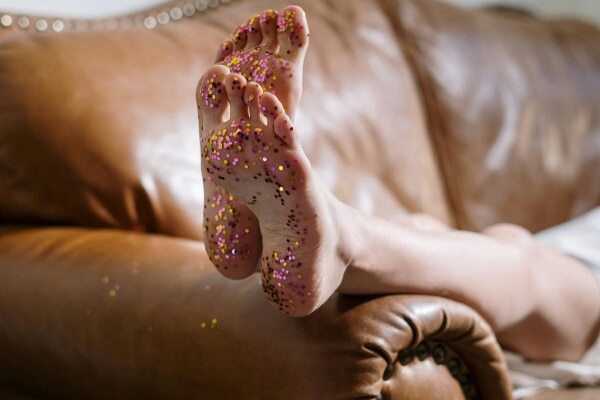Cracked heels can be a real nuisance. They can be uncomfortable and sometimes painful and don't look great either. But the good news is, you don't have to live with them. There are plenty of simple and effective home remedies for cracked heels to help soften and smooth those rough, dry heels. Let's explore some of the best ways to pamper your feet and get them looking and feeling their best. But first, let's understand what cracked heels are and what causes them.
01Introduction: Understanding Cracked Heels
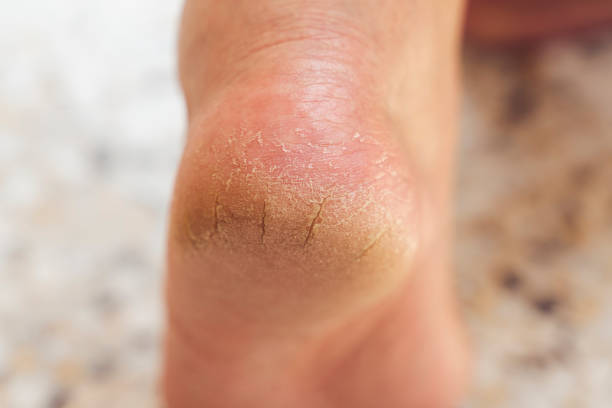
Cracked heels are a common foot problem that affects many people. They occur when the skin on the heels becomes dry and thick, forming cracks. This can be caused by various factors such as standing for long periods, wearing open-back shoes, dry weather, or even certain medical conditions like diabetes or thyroid issues.
Ignoring cracked heels can lead to deeper cracks, which can be painful and prone to infection. So, taking care of your feet and addressing the issue promptly is essential. Luckily, you don't need expensive treatments or fancy products to heal your cracked heels. Simple Indian home remedies for cracked heels can be just as effective, if not more so.
Here are all the effective ways to get rid of those dry patches and cracks.
1. Soothing Soaks
One of the best ways to start the healing process for cracked heels is by treating your feet to a soothing soak. A warm water foot bath with added ingredients like Epsom salt, apple cider vinegar, or a few drops of essential oils can help soften the skin, making it easier to remove dead skin cells.
2. Exfoliation for Smoothness
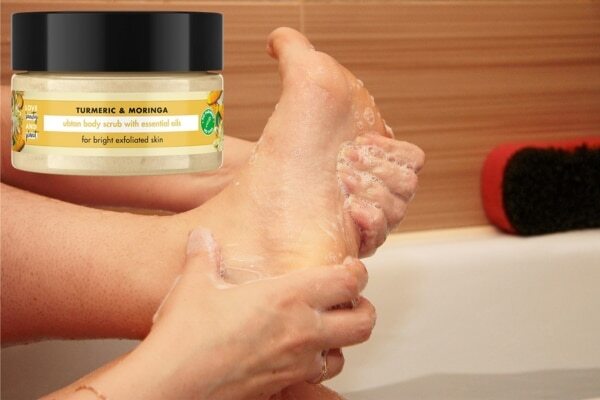
Once you've soaked your feet, it's time to exfoliate. Gently scrubbing your heels with a pumice stone or a foot scrub can help remove dead skin, leaving your heels feeling softer. Be sure not to overdo it, as excessive scrubbing can worsen the problem.
The Love Beauty and Planet Turmeric & Moringa Body Scrub is perfect for exfoliating your feet and is one of the best home remedy for cracked heels. It is enriched with a blend of Turmeric, Natural clay, Apricot and Moringa that not only help to exfoliate but detoxify and make your feet glow. The natural clay in it helps to exfoliate and detoxify your skin, while turmeric is a rich antioxidant that purifies and adds a natural glow.
3. Moisturising Magic
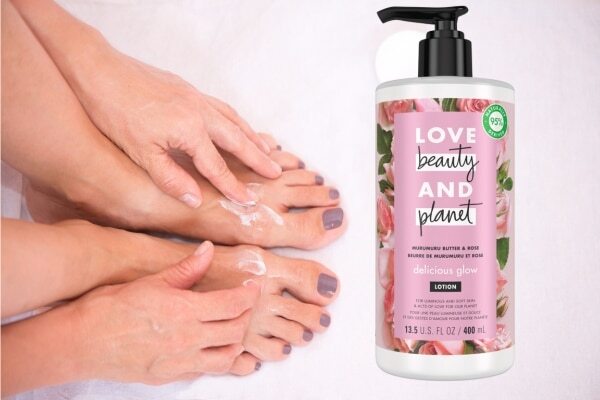
Moisturising your heels is one of the most important home remedies for cracked heels and feet. It is crucial for preventing and treating cracked skin. Opt for a rich, hydrating foot cream or natural oils such as coconut oil or olive oil. After exfoliation, generously apply your chosen moisturiser and cover your feet with socks to allow the product to penetrate deeply.
Use the Love Beauty and Planet Murumuru Butter & Rose Delicious Glow Body Lotion to moisturise your feet after exfoliating. It is a non-sticky lotion that not only deeply nourishes the skin but also gives it a gorgeous glow. The Bulgarian Rose petals in it leave a long-lasting, sweet, floral fragrance.
4. Wrap it Up
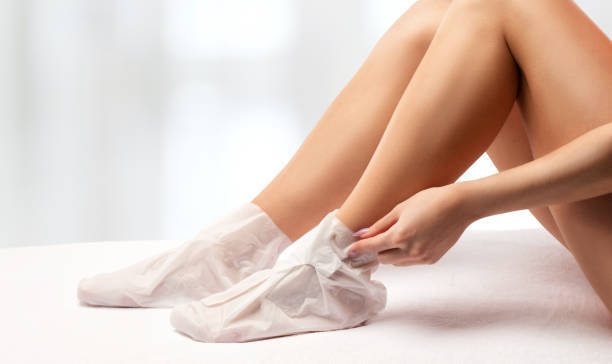
Using a foot wrap or mask can intensify the moisturising process and is the best home remedy for dry cracked heels. This can be achieved by applying a thick layer of moisturiser or a homemade foot mask and wearing socks overnight. This method allows the moisturiser to work its magic while you sleep, leaving you with noticeably softer heels in the morning.
5. Hydration from Within

Remember—hydration isn't just for the outside of your body! Drinking plenty of water helps keep your skin supple and hydrated, which can contribute to the overall health of your heels. Incorporating water-rich foods and beverages into your diet can also support your efforts to maintain smooth, soft heels.
6. Choose the Right Footwear
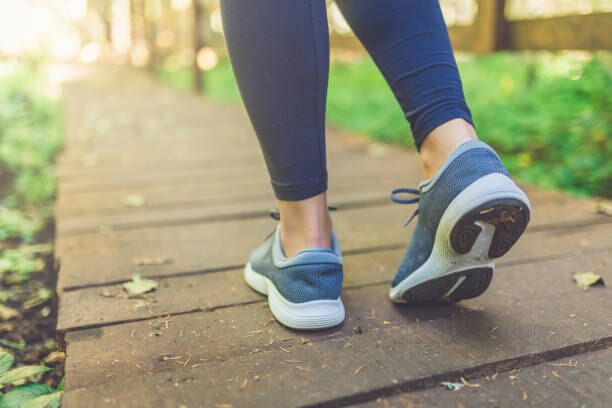
Wearing open-back shoes or sandals can lead to increased pressure on the heels, exacerbating the issue. Opt for well-fitted, closed footwear that provides adequate support to reduce strain on your heels. Using heel inserts or cushions can also alleviate pressure and friction, promoting healing and preventing further cracking.
Cracked heels don't have to be a constant source of discomfort or embarrassment. With these simple and effective home remedies, you can soften and smooth your heels, making them look and feel great. Remember, the key to healthy heels is regular care and maintenance. So, take a little time each week to pamper your feet, and you'll have happy, healthy heels.
You can also check out this summer skincare routine that will help you keep your skin and feet healthy!
02FAQs about Cracked Heels
Q1 What causes cracked heels?
A: Cracked heels are caused by dry skin and pressure on the heel, which can lead to skin splitting. Factors such as standing for long periods, wearing open-back shoes, dry weather, and certain medical conditions like diabetes or thyroid issues can contribute to cracked heels.
Q2 Are there any specific shoes I should avoid if I have cracked heels?
A: Avoid wearing open-back shoes, flip-flops, or sandals for extended periods, as they can cause additional stress on your heels. Opt for shoes that provide good support and cushioning.
Q3 How can I prevent cracked heels from recurring?
A: To prevent cracked heels from recurring, maintain a regular foot care routine that includes daily moisturising, wearing supportive shoes, and avoiding prolonged exposure to dry or harsh conditions. Keeping your skin hydrated and protected is key to preventing future cracks.

